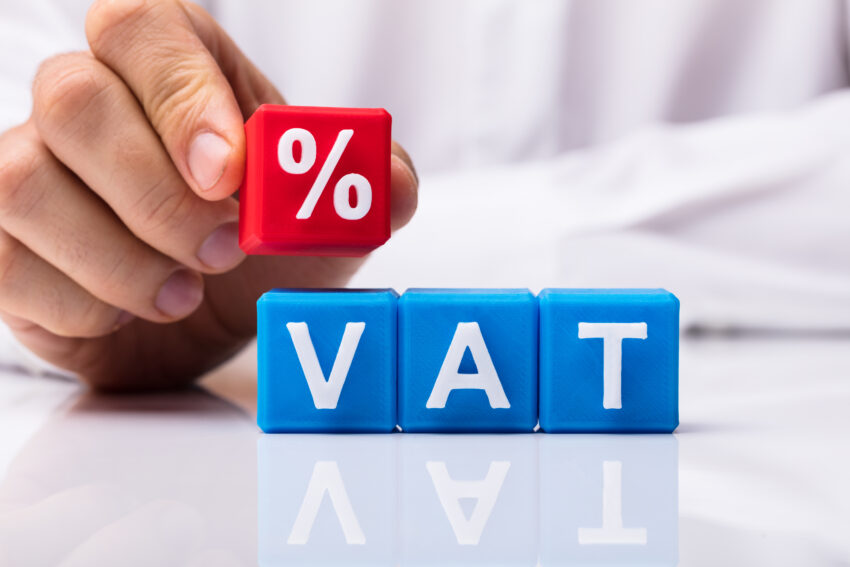It isn’t easy to stay abreast of tax changes, but every small business owner should pay attention to new developments to make sure they’re filing their return correctly.
In 2022, entrepreneurs can expect to see some changes with regards to VAT. While this might make calculating how much you owe a little bit more difficult, you can always rely on this UK VAT Calculator to make the whole process much smoother.
There are many factors that can impact the way businesses pay taxes, but in 2022 it’s likely to be the pandemic and Brexit that are at the root of some VAT adjustments. Regardless of the industry you’re working in, this blog will aim to cover some of the most notable changes in VAT charges for the coming year. This may cause you to rethink your annual budget allocation or even prompt you to improve on existing company practices.
Hospitality reduced rate to end
If your business operates within the leisure and hospitality field, you may have been enjoying a reduced rate of VAT since July 2020. However, because this measure was introduced to support businesses during the pandemic, it will soon be lifted and VAT will increase to the standard rate of 20% once more. The rate was originally decreased to 5% and then rose to 12.5%. Some businesses may have been hoping for this period to last longer, but rates will return to normal come April. This means that your VAT on goods such as food consumed on your premises and accommodation costs will be much greater.
While this might seem inconvenient, most small businesses shouldn’t suffer if their sales have increased once again to pre-pandemic levels. Don’t forget, if the increase is going to hit your business harder than you would like, you can claim tax relief on other expenses if you aren’t already, so make sure you do some research.
MTD becomes compulsory
You may have already heard about HMRC’s plans of Making Tax Digital (MTD), but 2022 will be the year all businesses earning over £85,000 per year will have to take part. If your business doesn’t have a turnover that’s this high but you’re VAT registered, you’ll still have to take part. Some businesses have been granted an exemption from MTD for various reasons. If you think this might apply to your business, check if you’re eligible for an extension and apply as soon as possible.
MTD essentially means that your VAT return must be completed online by using accredited accounting software. The introduction of this new policy is intended to make your VAT tax return a much smoother and quicker process. Instead of transferring financial records from spreadsheets into the system, make sure you’re using software from the 1st April 2022 to make the transition as seamless as possible. Once you have your new accounting software, you should also have the option of transferring historic accounts into your new system. While this isn’t compulsory, it will make keeping track of your finances much easier.
Accounting software might seem daunting at first, but it’s actually a very efficient way to track your business’ finances. Because so many businesses will be making the switch, you’ll be able to find lots of resources and support online to make the transition smoother. What’s more, there’s no need to worry about high fees, as most software packages can be paid for on a subscription basis to make them more affordable.
Late penalty charges
Right at the end of the year, the current system that penalises businesses for filing their VAT return late will be replaced with a new, fairer system. It’s being scrapped on the very last day of the year, so businesses will be able to benefit from the new policy at the start of 2023. While late penalties for VAT will still exist, they’ll be similar to the fees incurred for late submissions of other taxes and won’t be disproportionately high. Instead of a default surcharge, businesses will pay fees according to a points-based system along with interest charges. However, with MTD, businesses should be less likely to submit their tax return late as software makes the whole process intuitive.
Red diesel VAT to increase
If your business is within the construction or mining industry, you may have benefited from a 5% reduced VAT rate on red diesel. However, this reduced rate will be available to only a few, limited industries from April. These industries include rail transport, fish farming and agriculture, but haulage and quarrying sectors will likely have to pay a higher standard rate. This change has left many businesses considering whether red diesel is still a viable fuel option to continue their operations. It’s worth looking into other alternatives and calculating costs to make sure you’re not losing too much money.
The purpose of increasing the VAT on red diesel is to help the UK to lower its impact on the planet. With goals to no longer contribute to global warming by 2050, the country needs to cut out all of its greenhouse gasses by this date. Red diesel is responsible for a lot of pollution and increasing the VAT charges on its use may encourage businesses to turn to greener alternatives. It may even encourage some businesses to use less fuel overall, so if your business is impacted, it may be time to think of ways to make your processes more efficient.
Prepare your business for changes today
The best way to cope with new changes in VAT is with careful planning and preparation. If you’re worried about any of the changes mentioned in this blog, remember you can always reach out to an accountant or financial advisor who can help you to feel more confident going forwards. They’ll be able to make some calculations so you can understand the full impact of any changes and may even be able to offer advice on how alternative ways of working could benefit your business.
